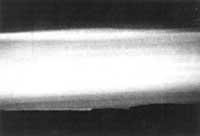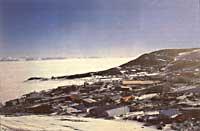This year more ozone hole than ever?
1992/10/01 Elhuyar Zientzia Iturria: Elhuyar aldizkaria
Due to the Pinatubo volcano, this year's possible Antarctic ozone hole can break all records. After measuring stratospheric ozone in Antarctica and the equator, some researchers have reached this conclusion.
W. NASA B. Grant collected data before and after lighting the Pinatubo volcano in Brazzaville, Congo (4H-15E) and the Ascension Islands (8H-14M) by sending gauges loaded with gauge to the skies.
It has been proven that most of the volcanic dust that has passed into the stratosphere is between 18 and 28 kilometers high and that the highest concentration has been measured between 24 and 25 kilometers of height. In addition, at this point stratospheric ozone levels decreased between three and six months since the eruption. The biggest decline occurred at kilometer 24, with 20%.

The decrease of the ozone level in the 16 to 28 kilometer section was between 13 and 20 Dobson units, that is, about 5%, but the researchers could not obtain data greater than kilometer 31, since the balloons exploded.
Grant and his colleagues claim that in the stratospheric reactions, in which Pinatubo's dust participates, chlorine breaks out that damages ozone. Stratospheric chlorine is mainly produced from CFC substances, but is normally found in stable form or chlorine nitrate. The sulfuric acid released by the pine nuts releases chlorine monoxide that damages ozone.
In the stratosphere, with ice particles, chlorine monoxide affects ozone in Antarctica between September and October. The ozone hole produced in 1991 has been the largest of all time. Measurements made at the McMurdo station showed that the largest hole occurred between 12 and 20 kilometers, specifically between 17 and 18 kilometers, when 93% of ozone was lost.
According to the aforementioned research team, “1991. Annual volcanic eruptions can increase the amount of aerosol in the stratosphere by 20 kilometers above and below. These particles can lead to heterogeneous reactions, which can lead to the biggest hole in history this year over Antarctica, between 12 and 20 kilometres.”

Gai honi buruzko eduki gehiago
Elhuyarrek garatutako teknologia





